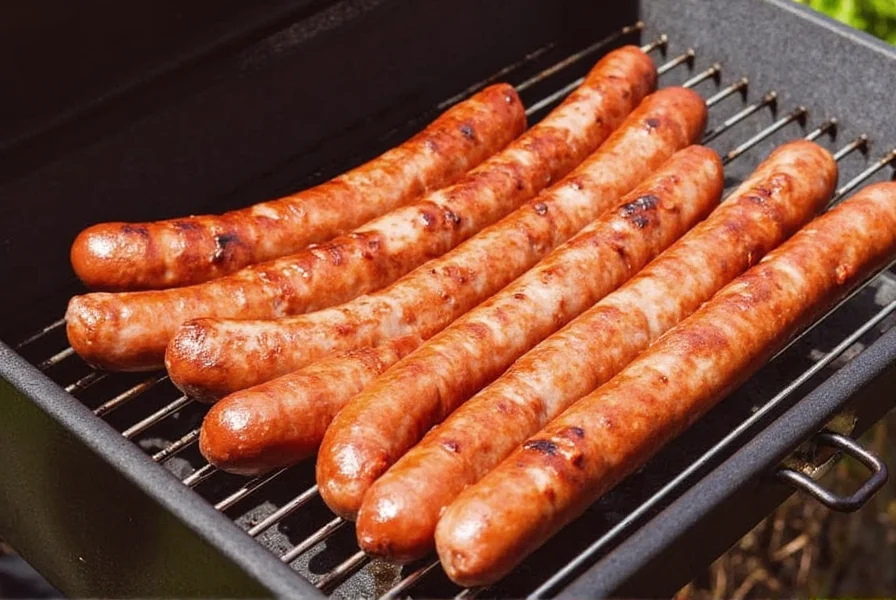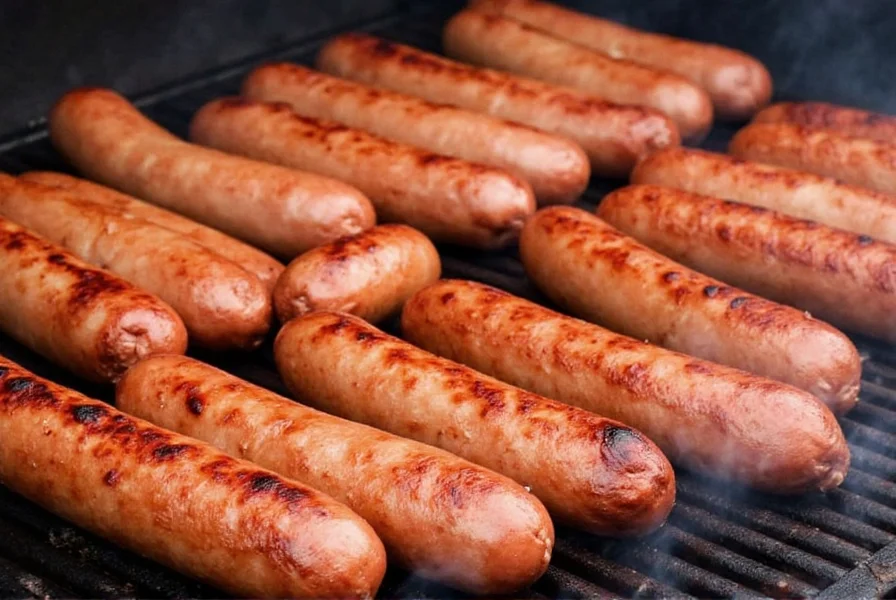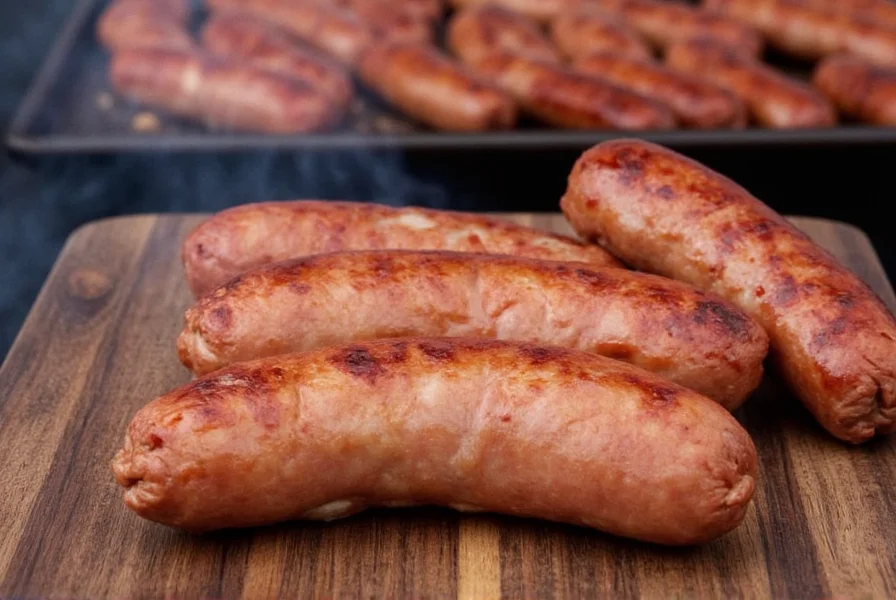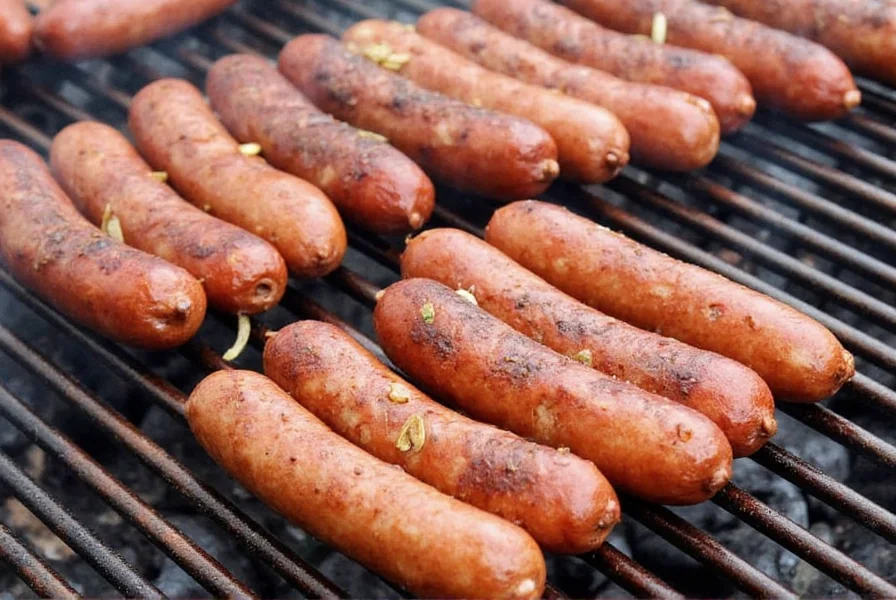The Safe Bratwurst Temperature: 160°F (71°C)
The safe internal temperature for bratwurst is 160°F (71°C). This is the minimum temperature required to kill harmful bacteria like Salmonella and E. coli while keeping the sausage juicy and flavorful. Whether you're grilling for a backyard party or cooking dinner at home, hitting this precise temperature ensures food safety and perfect texture every time.

Why 160°F Is the Gold Standard for Bratwurst
According to the USDA Food Safety and Inspection Service, pork sausages like bratwurst must reach 160°F (71°C) to be considered safe for consumption. Cooking beyond this temperature risks drying out the meat without improving safety. Here's how temperature impacts your bratwurst:
| Temperature Range | Texture & Doneness | Notes |
|---|---|---|
| Below 150°F (65°C) | Raw / Unsafe | Avoid; risk of bacteria like Salmonella and E. coli |
| 150–159°F (65–70°C) | Slightly Underdone | Not safe for consumption; bacteria may still be present |
| 160°F (71°C) | Safe & Juicy | Minimum safe temperature; ideal for flavor and safety |
| 165°F+ (74°C+) | Dry & Tough | Meat loses juiciness; avoid for best texture |
How to Check Bratwurst Internal Temperature Like a Pro
Accurate temperature measurement is critical for food safety. Follow these steps to ensure precision:
- Use a Digital Meat Thermometer: Instant-read digital thermometers provide reliable accuracy—dial thermometers often lag.
- Insert It Correctly: Place the probe in the thickest part of the sausage, avoiding contact with the casing or grill grates.
- Check Multiple Links: Sausages cook unevenly; verify temperature in 2-3 spots per batch.
- Don't Overcrowd the Grill: Leave space between links for even heat circulation.

Pro Tip: Skip the Boil
Parboiling brats before grilling is unnecessary and counterproductive. It washes out spices, softens the casing, and dilutes flavor. Instead:
- Start with indirect heat to cook through gently
- Finish with direct high heat for a crispy exterior
- Use a thermometer to confirm 160°F before serving
Spice & Sausage Storage Hacks for Maximum Freshness
Quality ingredients start with proper storage. Preserve spice potency and sausage freshness with these tips:

Storing Spices for Peak Flavor
- Away from Light & Heat: Keep spices in a cool, dark pantry—sunlight degrades potency in weeks.
- Use Glass Jars: Airtight glass seals preserve freshness better than plastic.
- Label Everything: Note purchase dates; ground spices lose potency after 6 months.
Bratwurst Storage Guide
| Type | Refrigerator | Freezer |
|---|---|---|
| Fresh Bratwurst | 1–2 days | 3 months |
| Cooked Bratwurst | 3–4 days | 2 months |
Grilling Tips for Perfect Brats Every Time
Master these techniques to achieve 160°F safely without dryness:
1. Use a Two-Zone Fire
Set up one side for high heat (searing) and one for medium-low (indirect cooking). This prevents charring before the center reaches 160°F.

2. Add Wood Chips for Depth
Place hickory or applewood chips in a smoker box for gas grills, or directly on charcoal. This infuses smoky flavor without overpowering the sausage.
3. Rest Before Serving
Let brats rest for 5 minutes after grilling. This redistributes juices, ensuring maximum moisture when bitten into.
4. Classic Toppings for Authentic Flavor
Pair with German mustard, caramelized onions, sauerkraut, or a soft pretzel bun to complement the meat's natural richness.
Frequently Asked Questions About Bratwurst Temperature
- What is the safe internal temperature for bratwurst?
Bratwurst must reach 160°F (71°C) to be safe for consumption. This is the USDA-recommended minimum for pork sausages. - Can bratwurst be a little pink inside?
No. Pink color indicates undercooking. At 160°F, bratwurst should be fully cooked with no pink visible. - Should I boil brats before grilling?
Never boil brats—it leaches flavor and makes casings soggy. Use indirect heat followed by searing for best results. - How long does it take to cook bratwurst to proper temperature?
Cooking time varies by grill type, but typically 15-20 minutes on medium heat. Always use a thermometer; never rely on time alone. - What happens if I overcook bratwurst?
Exceeding 165°F causes fat to render out completely, resulting in dry, tough meat. Aim for exactly 160°F for juiciness. - Can I eat bratwurst at 150°F?
No. 150°F is below the safe minimum. Harmful bacteria may still be present, risking foodborne illness.
Buying Guide: Best Thermometers and Grills
Investing in reliable tools ensures consistent results. Here are top recommendations:
Best Meat Thermometers
| Product Name | Features | Price | Best For |
|---|---|---|---|
| ThermoPro TP20 Digital Thermometer | Instant-read, large LCD display, waterproof | $19.99 | Home cooks needing accuracy and speed |
| Maverick ET-733 Dual Probe Thermometer | Wireless remote monitor, alarm function | $59.99 | Outdoor chefs who smoke or grill for hours |
| Taylor Precision Products Digital Thermometer | Affordable, easy to read, basic functionality | $14.99 | Beginners and budget-conscious buyers |

Top Grills for Bratwurst Lovers
| Product Name | Features | Price | Best For |
|---|---|---|---|
| Weber Spirit E-310 | Three burners, porcelain-coated cast iron grates | $499 | Families who grill often and need versatility |
| Char-Broil Performance 475 | Side burner, large cooking surface, stainless steel | $399 | Backyard cooks who love burgers, steaks, and brats |
| Kamado Joe Classic II | Ceramic body, precise temperature control | $1,199 | Pitmasters and smokers who want versatility |

Final Thoughts on Perfect Bratwurst
Mastering bratwurst starts with respecting the science of temperature. The USDA-recommended 160°F (71°C) ensures safety without sacrificing juiciness. Always use a thermometer—never guess by time or appearance. With the right tools and techniques, you'll achieve restaurant-quality brats every time.












 浙公网安备
33010002000092号
浙公网安备
33010002000092号 浙B2-20120091-4
浙B2-20120091-4